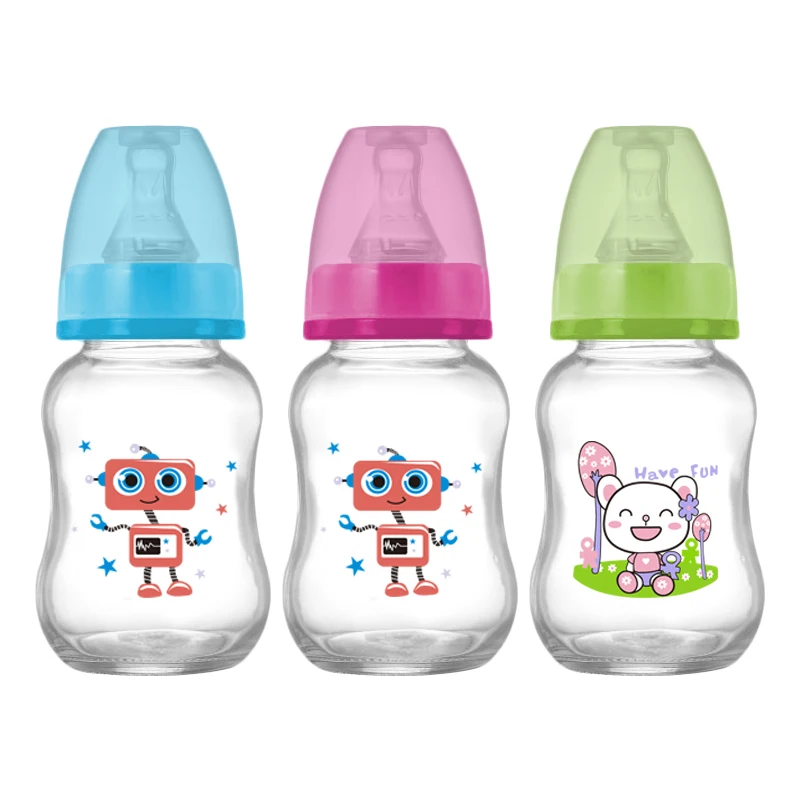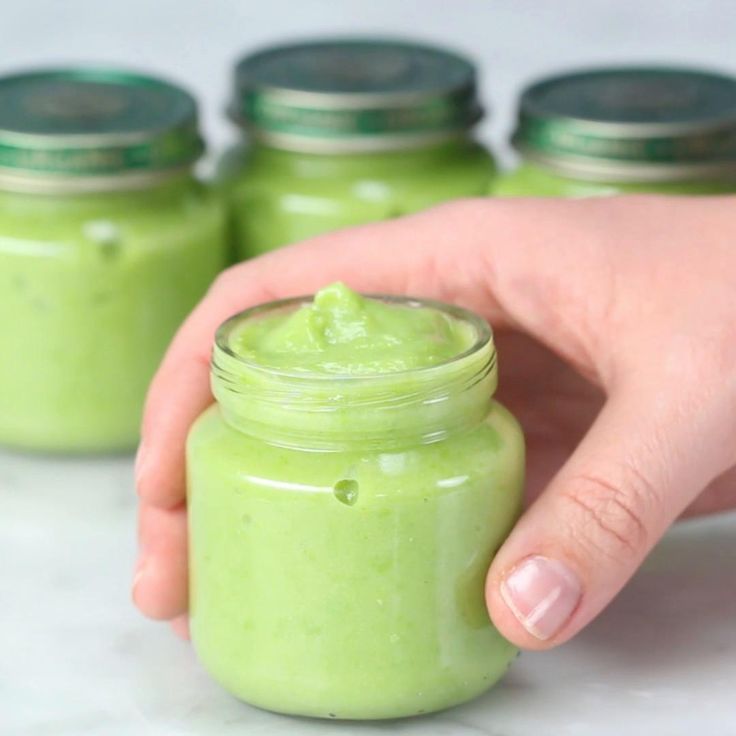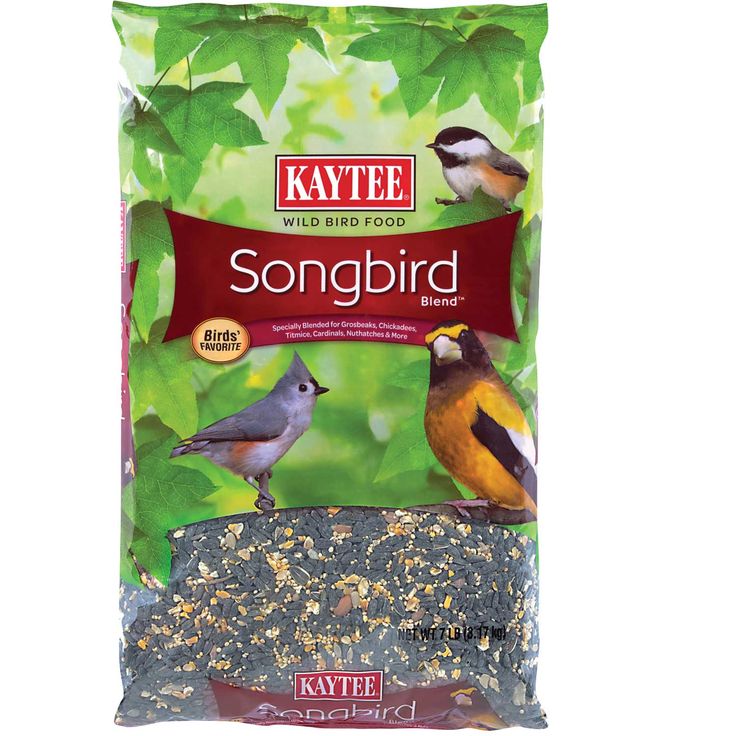When do baby kittens start eating solid food
Kitten Feeding Week by Week
Feeding orphaned kittens can feel like a full-time job, especially in the beginning when they need to be fed the most. But it’s also incredibly rewarding, and before you know it, your kittens will be eating on their own and soon ready to find homes. The feeding protocols below are provided by the Kitten Nursery of Salt Lake County Animal Services, in partnership with Best Friends Animal Society–Utah.
Kittens one week old or less: Bottle-feeding
- Food type: Formula
- Frequency: Every 2 – 3 hours (8 – 12 times per day)
- Amount: 3 – 4 cc per feeding
Two-week-old kittens: Bottle-feeding
- Food type: Formula
- Frequency: Every 3 hours (8 times per day)
- Amount: 5 – 6 cc per feeding
Three- to four-week-old kittens: Bottle-feeding
- Food type: Formula
- Frequency: Every 4 hours (6 times per day)
- Amount: 13 – 17 cc per feeding
Four-week-old kittens: Begin feeding gruel – Weaning stage
- Food type: 1/2 can per kitten of gruel (gruel instructions below) in a dish and dry kitten food in a dish, and dish full of water at all times.
Plus formula three times per day.
- Frequency: Keep kibble, water and gruel in cage at all times.
- Give 13 – 17 cc of formula every 8 hours (3 times per day).
- During bottle-feeding sessions, try to get the kittens to also eat gruel off a spoon or tongue depressor and from a dish (see instructions on making gruel for more tips). It is important to start getting small amounts of gruel into their stomachs.
- Note: At this time, also introduce litter box; kittens can eliminate on their own at this age and do not need to be stimulated to go anymore.
How to mix gruel
Small batch (for one kitten): ½ can of wet kitten food mixed with ¼ can of formula (use an empty food can as a measuring cup).
Large batch: Whisk 8 cans wet kitten food with 4 cans of fresh, warm formula (use the empty food can as a measuring cup). At this age, kittens like their food a little lumpy so they can chew.
Note: Substitute the warm water for formula in gruel for kittens 5 weeks and older.
Helpful tips when using gruel:
- When introducing kittens to gruel, put gruel in a flat dish and place kittens near the dish. If they do not start to eat on their own after a few minutes, use tongue depressor or spoon to scoop gruel into kitten’s mouth. You may have to open their mouth and put a little in. You can also put a little gruel on their nose and see if they will lick it off. Sometimes the kittens need to adjust to the new taste.
- Once kitten starts to eat gruel off the spoon or tongue depressor (may take a few feedings for them to figure this step out), slowly start to lower it towards the dish of gruel. The kittens should easily transition from the spoon or depressor to the dish (may take a day for them to start eating out of the dish regularly).
- During the weaning process, kittens still need to be bottle-fed three times per day (about every 8 hours) to ensure they are receiving proper nutrients.
Five- to eight-week-old kittens: Solid food
Food type: ½ can per kitten of kibble in a dish and wet food in a dish at all times, and a dish full of water at all times
- Kittens 3 to 5 weeks should be given baby cat kibble.

- Kittens 5 to 6 weeks should be given kitten kibble and kibble should be mixed into the wet food.
- Kittens 7 weeks and older should eat mainly dry kibble.
- Weeks 5 and 6 are transition weeks where the two foods (what they were eating and what they will be eating) should be mixed together so their tummies do not get upset by the change in diet. Gradually decrease the amount of food they were eating while increasing what they will be eating over the course of 7 days.
Spay or neuter and adoption
Eight-week-old healthy kittens are fully weaned and should soon be ready to be spayed or neutered and to find their new forever homes. It is much easier to find homes for eight-week old kittens than it is if you wait longer, so start setting a plan early on. Sharing photos of the kittens with friends and family as they grow, and telling everyone you know that you’ll be looking for homes for the kittens is a great way to find homes. For more advice on finding homes for the kittens, see this guide on finding homes for homeless pets.
It is also important to ensure that all the kittens are spayed or neutered, so they don’t accidentally add to the thousands of unplanned litters of kittens that enter shelters each year. Find a low-cost spay/neuter clinic near you.
While caring for orphaned kittens is a lot of work, it’s also a lot of fun. The most rewarding part is watching your charges grow up and go into new homes. And the best part is that you can feel good knowing that you helped keep kittens — the most at-risk animals to enter shelters — safe and sound.
More about abandoned baby kitten care
Note: This article is the last in a four-part series on caring for baby kittens who are abandoned.
Photos by Sarah Ause Kichas
Categories:
CatCaring for Pets
When can kittens start eating solid food?
Search blog
All articles News Vet clinic Life as vet Ask a vet Dogs Cats
If there is one thing that we can all agree on, it is that kittens are insanely cute.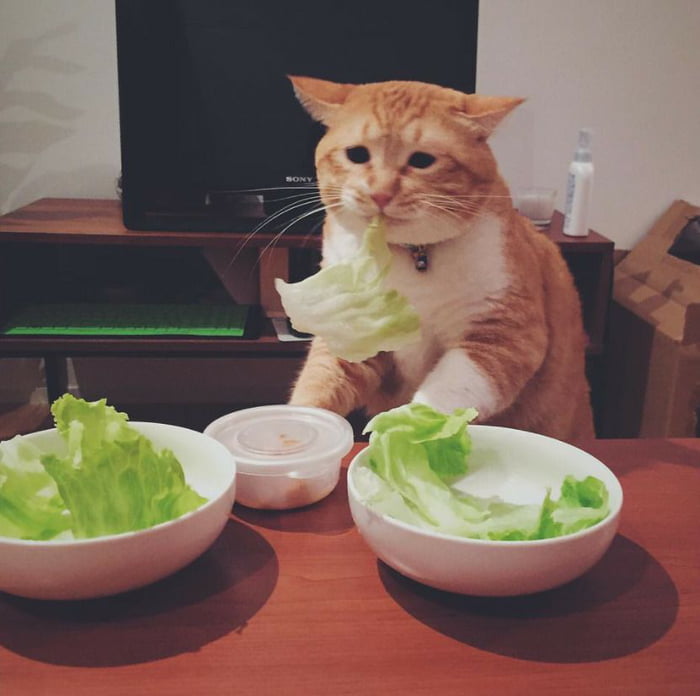 Those of us lucky enough to have their homes overrun by the little critters will be very aware of the responsibility to ensure that they get the best care. A crucial part of this is successfully weaning them from milk onto solid food. The Cats Protection League survey in 2020 found that 16% of all neutered female cats have one litter before they are spayed. Given there are 5.3 million owned female cats in the UK, that equates to a lot of kittens that need to be weaned onto solids. So, whether breeding was intended, or the kittens were an accident, knowing when to start weaning them onto solid food is essential for giving a kitten the best start in life.
Those of us lucky enough to have their homes overrun by the little critters will be very aware of the responsibility to ensure that they get the best care. A crucial part of this is successfully weaning them from milk onto solid food. The Cats Protection League survey in 2020 found that 16% of all neutered female cats have one litter before they are spayed. Given there are 5.3 million owned female cats in the UK, that equates to a lot of kittens that need to be weaned onto solids. So, whether breeding was intended, or the kittens were an accident, knowing when to start weaning them onto solid food is essential for giving a kitten the best start in life.
Table of contents
- What is the meaning of “weaning”?
- Kittens are ready to try solid foods at 4 weeks old.
- What are the pitfalls to watch out for?
- Is the timing of weaning different for hand-rears?
- You might also be interested in:
What is the meaning of “weaning”?
The Oxford English Dictionary defines weaning as to “accustom (an infant or other young mammal) to food other than its mother’s milk”. There is a second definition, which when talking about baby animals, is often conflated with the first: “accustom (someone) to managing without something which they have become dependent on”. In this context, removing the kitten permanently from the mother. This confusion is unfortunate as it suggests that kittens (and other baby animals) should be removed from their mothers when they start eating solid food. In fact, a kitten should remain with the mother at least a month after they have started eating solid food to ensure adequate socialization.
There is a second definition, which when talking about baby animals, is often conflated with the first: “accustom (someone) to managing without something which they have become dependent on”. In this context, removing the kitten permanently from the mother. This confusion is unfortunate as it suggests that kittens (and other baby animals) should be removed from their mothers when they start eating solid food. In fact, a kitten should remain with the mother at least a month after they have started eating solid food to ensure adequate socialization.
“Early weaning”, as in early separation from the mother, can result in behavioural problems. It can be a challenge in hand-reared kittens. However, here we discuss weaning in strictly the sense of introducing a kitten to solid food.
Kittens are ready to try solid foods at 4 weeks old.
Weaning a kitten from a 100% milk diet to solid food is a delicate business. Some kittens might start showing interest in their mother’s food from 3 weeks of age. Most will be ready to be introduced to kitten gruel by 4 weeks of age. At this stage, you should be actively encouraging kittens to eat solid food. Kitten gruel is a mash of high-quality kitten food mixed with kitten replacement milk formula. It is designed to be easy for the kitten to lap up.
Most will be ready to be introduced to kitten gruel by 4 weeks of age. At this stage, you should be actively encouraging kittens to eat solid food. Kitten gruel is a mash of high-quality kitten food mixed with kitten replacement milk formula. It is designed to be easy for the kitten to lap up.
As kittens get used to the gruel, the amount of milk added can be reduced gradually. It helps to serve the gruel in a flat dish. Such as a saucer or even an upside-down Tupperware lid if there is one to spare. This allows easy access to the food. Expect feeding to be very messy for the first few days. But most kittens should complete the transition to kitten food by 6 weeks of age.
What are the pitfalls to watch out for?
Just like human babies, kittens develop at different rates. So whilst some may be chowing down their gruel in no time, they may have siblings who are struggling to get the hang of things. It may simply be that they need more time to get used to solids. Still, it is a good idea to weigh all kittens daily to pick up any problems early.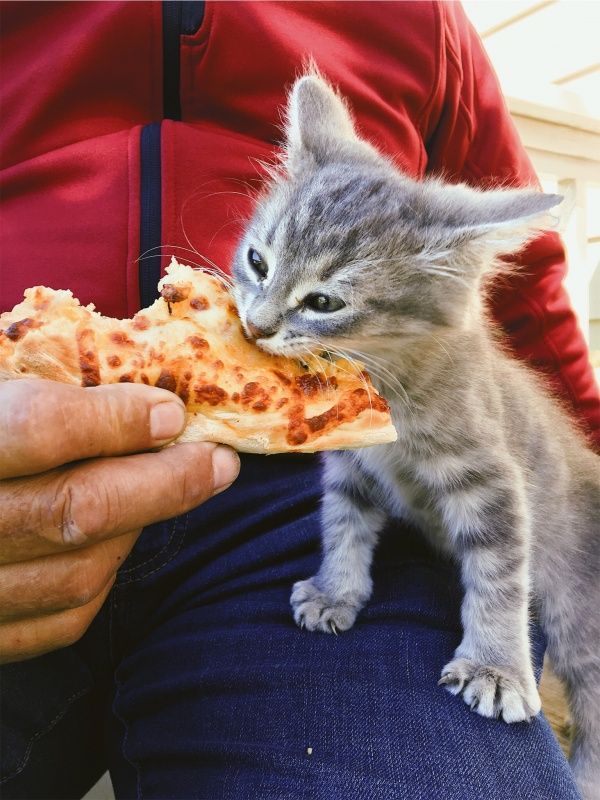 Even if they are still nursing from their mother. A healthy kitten should gain at least 10 grams a day. If, after introducing solids, the kitten’s weight gain curve flattens or they become dull and lethargic, that is the cue to take the little one for a checkup with the vet to see if an underlying cause can be identified.
Even if they are still nursing from their mother. A healthy kitten should gain at least 10 grams a day. If, after introducing solids, the kitten’s weight gain curve flattens or they become dull and lethargic, that is the cue to take the little one for a checkup with the vet to see if an underlying cause can be identified.
Is the timing of weaning different for hand-rears?
Unfortunately, no. After several weeks of relentless night feeds, the temptation to get the little darlings onto solids earlier is understandable. Nevertheless, the magic age for introduction to solids for hand-reared kittens is still 4 weeks and certainly not before 3 weeks of age.
You might also be interested in:
Development of kittens by day - how kittens grow by week: growth of kittens by months
Understanding the amazing transformation that a kitten goes through from birth to adulthood will help you provide him with the right balanced nutrition at every stage of development.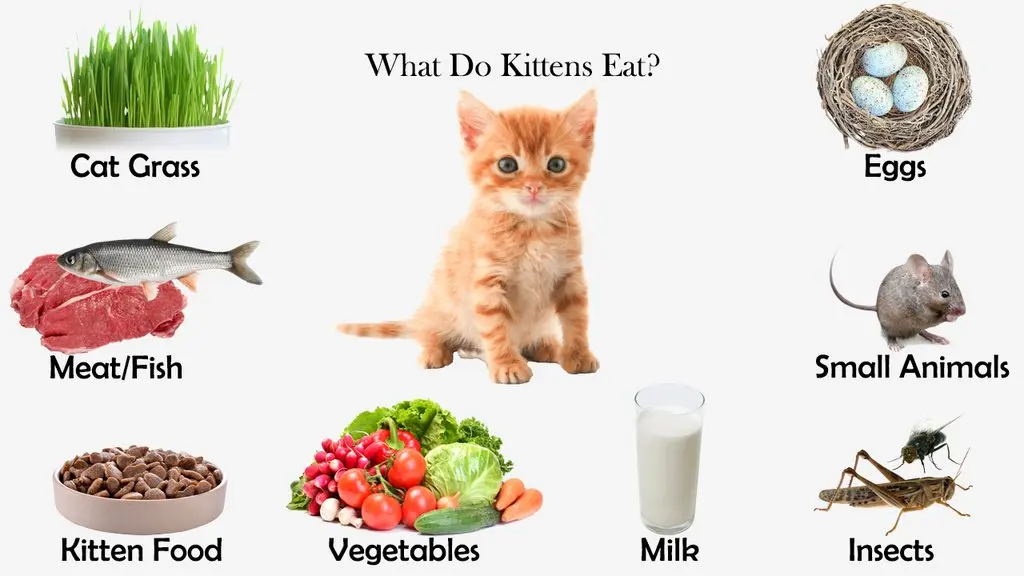
- Birth
- Neonatal
- Weaning
- Intensive growth
- Slow growth
- Growing up kittens
Birth
Immediately after birth, care should be taken to ensure that kittens begin to receive mother's milk. In the first hours and days after birth, the mother, along with milk, provides the newborn with the necessary nutrients that contribute to the healthy development of kittens.
Birth
Nutrition
After birth, kittens should immediately crawl to their mother and start sucking milk. This is how they get colostrum, a component of mother's milk that is rich in antibodies and strengthens the immune system.
Birth
Health
At birth, kittens are at risk of two types: First, due to abruption of the placenta, they may suffer from lack of oxygen for different periods of time. Secondly, after birth, they come into direct contact with bacteria and viruses in the environment. The breeder must take all precautions, carefully prepare the birthing arena and supervise the birth of kittens, in order to reduce the risk of neonatal health problems.
The breeder must take all precautions, carefully prepare the birthing arena and supervise the birth of kittens, in order to reduce the risk of neonatal health problems.
Birth
Behavior
Although kittens are born deaf and blind, they exhibit a number of reflex behavioral responses early on. Kittens are already able to navigate in space, relying on smell and touch. They can warm themselves by snuggling up to their mother and suck her milk to satisfy their hunger.
Birth
Development
Newborn kittens should weigh approximately 2-3% of their mother's weight. In the early days, their daily weight gain is approximately 10% of their birth weight. Males usually weigh more and grow faster. Kittens are born blind and deaf. They are drawn to their mother for protection and nourishment.
Birth
Housing conditions
Newborn kittens should always be near their mother, who warms, feeds and licks them. Their playpen should be kept at around 30°C to reduce the risk of hypothermia, and aim to keep the humidity at 65-70%.
Neonatal
Newborn kittens are protected and warm next to their mother and other kittens of their litter. Most of the time they sleep and eat.
0 to 3 weeks
Health
During the first days of life, kittens should be examined by a responsible breeder by a veterinarian. The veterinarian will check to see if the kittens have birth defects or health problems that require treatment. Separation of kittens from their mother and littermates at the neonatal age can lead to physical and mental retardation and behavioral problems associated with aggression. Deworming in the first six months of life should be carried out monthly.
0-3 weeks
Nutrition
At this stage, the kitten's immune system is still largely supported by mother's milk, which provides the body with the essential proteins needed for development.
0-3 weeks
Behavior
At this stage, kittens sleep most of the day - about 90% of the time in the first few weeks. They only move to crawl to their mother for warmth and milk. Kittens already know how to purr and make other sounds.
They only move to crawl to their mother for warmth and milk. Kittens already know how to purr and make other sounds.
From 0 to 3 weeks
Development
At about five days old, kittens open their eyes. The umbilical cord falls off about a week after birth. At the same time, kittens begin to gain weight from 10 to 30 grams per day.
0–3 weeks
Living conditions
In the first weeks of a kitten's life, the main requirements for keeping conditions are cleanliness, silence and warmth. Excessive noise and distractions can disrupt sleep and eating patterns. It is very important that the kitten's body temperature does not fall below 35 ° C, otherwise it will not be able to effectively absorb mother's milk. And if the body temperature drops below 32 ° C, the kitten will lose the sucking reflex, which will make normal feeding impossible.
Weaning
The physical development of kittens accelerates and the weaning process begins. This is an important stage in which the kitten learns by watching the mother and interacting with other kittens.
This is an important stage in which the kitten learns by watching the mother and interacting with other kittens.
4-8 weeks
Nutrition
As the baby teeth develop, the weaning (weaning) process begins for the kitten. After a while, the kittens show their first interest in the solid food that their mother receives, and then you can begin to introduce solid food into their diet. Because of their immature digestive system, it is very important for kittens to receive a diet that is easy to digest and takes into account their special needs at this stage.
4-8 weeks
Health
At this stage, the immune system weakens. This means that the protection provided by maternally acquired antibodies has already weakened, but the amount of these antibodies is still high enough that vaccination may not be effective. During this period, the kitten becomes especially susceptible to diseases. Because sleep helps boost your kitten's immune system, it's important to provide a warm, comfortable, and quiet place to sleep.
4-8 weeks
Behavior
At this stage, the kittens begin to interact more and groom each other's fur. They begin to actively play, run, attack and imitate hunting. At this stage, kittens' vision is fully developed.
4–8 weeks
Development
Hearing and sense of smell are well developed by the fourth week. By the end of the sixth-seventh weeks, the sleep pattern and motor skills characteristic of adult animals begin to form. Key social skills are developed in the process of communicating with littermates, and learning occurs by observing the behavior of the mother.
4-8 weeks
Housing conditions
As kittens become more curious and active at this age, it is important to make the environment safe for them. In addition, housing conditions play an important role in their learning, so make sure that the kittens have constant access to toys and other objects that stimulate the development of cognitive functions. Regular communication with different people will help kittens interact more confidently with a person in the future.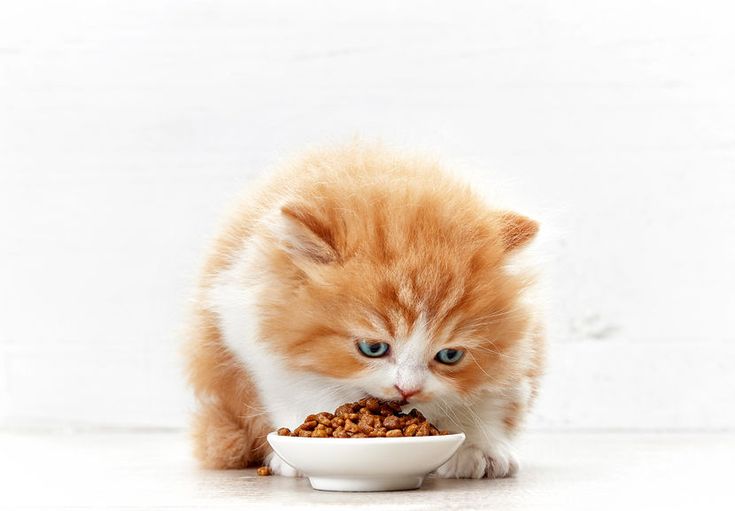
Intensive growth
The kitten begins to understand what is required of him and develops behavior that will not change during his life.
2-4 months
Health
Approximately eight weeks of age is ideal for the first vaccination of a kitten, subsequent mandatory booster after 3-5 weeks. This is an important process that provides the kitten with protection against dangerous diseases in adulthood. See your veterinarian for a vaccination plan.
2-4 months
Nutrition
Some nutrients are not yet fully absorbed by the kitten, so it is important that he receives a diet tailored to his individual needs at a particular stage of his development. This food provides your pet with the nutrients and energy it needs during this vital stage of development.
2-4 months
Behavior
At this stage, the kitten's behavior is most influenced by its environment, including kittens from its litter, other pets and people. In addition, the kitten begins to understand what place he occupies in the house, and he may develop dominant or submissive behavior depending on his experience and upbringing.
2-4 months
Development
This is a key stage in the development of a relationship, so stability, support and emotional attachment are very important. Effective socialization at this stage will help raise a well-mannered and happy cat.
2-4 months
Housing conditions
Kittens can be taken from their mother and introduced to a new home from 8 weeks of age. Depending on the breeder, this period can increase up to 12 weeks. Before bringing a kitten home, it is important to make sure that the apartment is completely ready for its arrival: you should hide electrical wires and close sockets, secure windows, balconies and stairs, and remove all sharp and small objects.
Slow growth
As the kitten matures, it gradually reaches full physical maturity.
Older than 4 months
Health
During this period, cats begin to mark the territory where they live with urine and facial secretions: they rub their heads against objects, other animals and people. This is a sign of the onset of puberty. Now you should discuss with the veterinarian the need for sterilization (castration).
Older than 4 months
Nutrition
As a kitten reaches physical maturity and approaches adult weight, it should be gradually transitioned to an adult cat diet and portion sizes adjusted accordingly. The balance of nutrients in the composition of the food depends on the age of the cat and factors that affect metabolism, such as lifestyle (whether the animal is outdoors) and castration (whether the animal has been castrated).
Older than 4 months
Behavior
As the cat matures, it will become more and more dominant in your family. It "tests" the status of humans and other animals in the existing hierarchy. It is important that you, as the owner, maintain the norms of behavior and daily routine that you establish for your pet in the first months of his life. The stability of the situation will allow you to control the level of stress.
It is important that you, as the owner, maintain the norms of behavior and daily routine that you establish for your pet in the first months of his life. The stability of the situation will allow you to control the level of stress.
Older than 4 months
Development
At this stage, the kitten changes teeth by 30 permanent teeth. If the kitten is not spayed, puberty occurs at six months, accompanied by sexual cycles and mating behavior. By eight months, a kitten reaches 80% of the weight of an adult animal. Depending on the size of the breed, maturation occurs between 12 and 15 months.
Older than 4 months
Housing conditions
If the kittens have received all the necessary vaccinations, from the age of about six months you can let them go outside. It is best to proceed in stages. Until the kittens get used to the new environment, stay outside with them. When they feel more confident, they will begin to actively explore the surrounding space. As a rule, cats move farther from the house than cats. At this stage, consistent owner behavior and discipline are important.
As a rule, cats move farther from the house than cats. At this stage, consistent owner behavior and discipline are important.
Growing up your pet
The weight of an adult animal is 40-50 times the weight of a newborn kitten.
12-18 months
Growing up your pet
Kittens become adults about 12 months after birth, while larger breed cats do not reach maturity until 15 months of age. When a cat becomes an adult, it should be gradually transitioned to a food that can meet its nutritional needs, taking into account the breed and lifestyle.
Kitten-Specific Nutrition
ROYAL CANIN® Kitten Nutrition supports your pet's growth and development by providing all the nutrients your kitten needs for a healthy first year of life.
Kitten food
Find the right food for your cat
Our products are formulated to meet the needs of adult cats based on their age, breed, size and lifestyle.
Cat food
Features of puberty of a cat
Five Key Stages of Kitten Growth
When do kittens become adults?
Kitten nutrition questions
Kitten Puberty
Preparing a kitten for the first visit to the veterinarian
Care and feeding of a cat during pregnancy
Vaccination of kittens
Changing teeth for kittens
When kittens start eating on their own, how to teach them to eat on their own
A new pet has appeared in the house, but bad luck - too small. Early weaning can occur for many reasons. The situation is serious, and the new owners will have to teach the baby all the necessary skills themselves. One of the problems acutely facing the owners is accustoming to independent eating.
Contents
-
1 What is the duration of natural feeding of newborn kittens with mother's milk
-
1.1 What to do if the kitten is without a mother
-
1.1.1 Video: How to make your own kitten formula
-
-
1.2 When the kitten is ready to feed
-
-
2 How to introduce first complementary foods
-
2.1 Table: sample menu for kittens
-
-
3 How a kitten learns to eat by itself
-
3.1 Video: how to teach a kitten to eat from a bowl
-
3.2 Possible problems when switching to self-feeding
-
-
4 Specialist tips for accustoming kittens to new food and bowl
-
4.1 Video: how to choose a bowl for a kitten
-
-
5 Safety precautions for a kitten starting to feed on its own
-
6 Table: diet and nutritional norms for kittens
What is the duration of natural feeding of newborn kittens with mother's milk
In nature, in its natural habitat, a mother cat feeds her cubs for quite a long time. In a small litter (up to 5 kittens), breastfeeding can last up to six months. But the main period lasts about 3 months:
In street conditions, there is no question of any special diet. But for pets, the transfer process is different, and it is possible to choose food for babies that best meets the needs of a growing kitten.
What to do if the kitten was without a mother
A kitten can be left without a cat for various reasons. The task of a person is to replace his mother as much as possible, to provide nutrition, security and education.
First of all, it is necessary to equip a place for the baby. It should be quite secluded. It can be a special house for cats or a box - there are many options. It is necessary to line the bottom with soft flooring: put a blanket or diaper. The place for the house should not be located in a draft, but you should not install it near the battery either.
Heat transfer in kittens is not yet perfect, therefore, for very young ones (up to 2 weeks old), additional heating should be provided, for example, place hot water bottles wrapped in a towel in a box.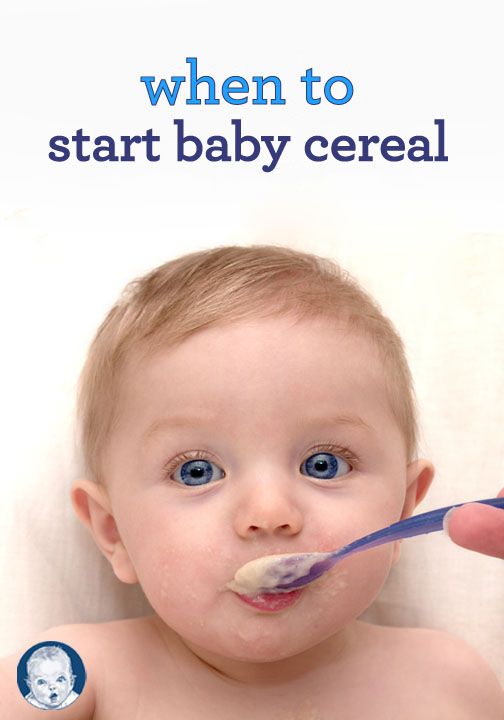
The owner will also have to feed the baby. Newborns are fed quite often - every 2-3 hours. In veterinary pharmacies, you can buy special bottles with nipples, as well as a dry mixture - a substitute for cat's milk. True, the latter is quite expensive, so you can prepare nutritious milk yourself. Whole cow's milk is not suitable for feeding kittens, it does not have sufficient nutritional value and may cause digestive disorders.
There are commercially available dry mixes from different manufacturers for feeding kittens
Video: How to make your own kitten formula
When the kitten is ready to feed
Although breastfeeding can last quite a long time, you can start accustoming a kitten to self-feeding from 3 weeks of age. This applies to all babies and does not depend on belonging to a particular breed. As soon as the kittens begin to more or less stand on their paws and walk, you can try to offer them other food.
This applies to all babies and does not depend on belonging to a particular breed. As soon as the kittens begin to more or less stand on their paws and walk, you can try to offer them other food.
My cat had 3 kittens in the litter. They started walking at the same time, but eating from a bowl at different times. One of the kids already in a month deftly managed with a thin porridge and even tried to steal a granule of dry food from his mother from a plate. The second mastered lapping from a bowl by 1.5 months. But the third one, up to 2 months, ran away from the plate, as if from fire, and then he ate very little. I preferred to find my mother and kiss my breast. So it seems to me that readiness for complementary foods is an individual trait.
How to introduce the first complementary foods
Caution should be exercised when introducing the first complementary foods. You need to offer your pet new food gradually, in small portions. Keep in mind that cats, like humans, can have allergies. Therefore, new food is offered to be licked from the finger first, and only the next day a small portion is served in a bowl.
Therefore, new food is offered to be licked from the finger first, and only the next day a small portion is served in a bowl.
Table: sample menu for kittens
| Kitten age (weeks) | Complementary food | Quantity (at a time) |
| 3 | Milk | 10-16 ml |
| 4–5 | Milk + porridge | 16-18 ml/g |
| 5–6 |
| ~20 g |
| 6-8 |
| 30-40 g |
| 8–10 |
| 40-50 g/according to package directions |
How a kitten learns to eat by itself
Kittens are naturally curious. They have a wonderful sense of smell, and they will be extremely focused on sniffing the muzzle of the mother after she has eaten. The most daring will try to lick their mother's lips. This is a signal that babies are ready to try other foods.
They have a wonderful sense of smell, and they will be extremely focused on sniffing the muzzle of the mother after she has eaten. The most daring will try to lick their mother's lips. This is a signal that babies are ready to try other foods.
If the kittens grow up with their mother, then the cat will take them to the bowl and teach them everything. But the baby without maternal supervision will be tight. Here all responsibility passes to the owner:
- Finger or spoon food is offered first. The baby can't handle the bowl. Most likely, he will step into it with his paws and immediately turn it over. Milk should come first. Kitten licked and wants more? He will fuss, meow loudly and show interest in every possible way. In this case, you can offer a saucer or bowl.
- Have the baby sniff the bowl first. Then you need to lightly poke his muzzle into the food. If you like it, it will start to lap up.
- At first, the kitten may choke (he will snort or sneeze), climb into the bowl with his paws, turn it over.
 The owner needs to be patient. Quickly enough, the baby will figure out what's what, and will begin to eat more carefully.
The owner needs to be patient. Quickly enough, the baby will figure out what's what, and will begin to eat more carefully.
Video: how to teach a kitten to eat from a bowl
Possible problems when switching to self-feeding
When switching to self-feeding, a kitten may experience a number of problems. These include:
- Gastrointestinal disorder. This may mean that the food did not suit your baby. Most often this happens against the background of feeding cow's milk. In order not to aggravate the problem, the kitten can be offered a liquid homogeneous porridge (for example, from oatmeal), boiled with the addition of a small amount of milk (“for smell”) or in low-fat meat broth. For constipation, do not forget to massage the tummy after eating.
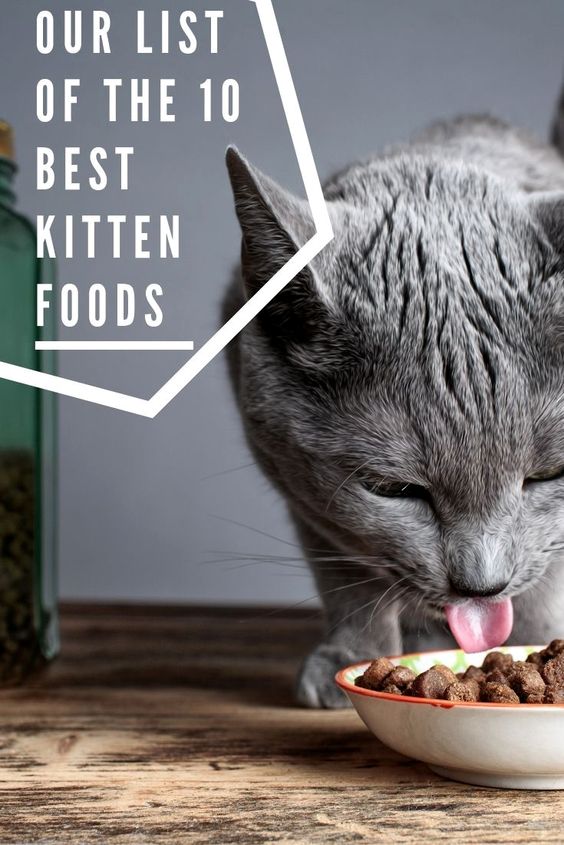
- Allergy. In kittens, it can manifest itself, as in humans, with rashes on the skin, hair loss. The allergen should be identified and eliminated. At the time of the kitten, you can switch back to full breastfeeding or formula feeding.
- Psychological refusal of food. A categorical refusal of food may mean that the baby is not yet psychologically ready to eat on his own. At the same time, the owner should offer him food in small portions, but not be persistent. Literally in a few days or a week, the situation may change radically, and the kitten will begin to show interest in his bowl and its contents.
For my kittens, I cooked oatmeal in chicken breast broth. Blended in a blender before serving. The kittens felt the attractive smell of meat and ate with pleasure, especially since their mother ate the same porridge, only with meat.
Specialist advice on how to accustom kittens to new food and bowl
Successful accustoming to self-feeding largely depends on the dishes in which the kitten is offered food. It should be low, not slip on the floor, the bowl must be clean. It is highly undesirable to wash it with the product. The fact is that kittens have a sharp sense of smell, and extraneous odors will only scare him away.
It should be low, not slip on the floor, the bowl must be clean. It is highly undesirable to wash it with the product. The fact is that kittens have a sharp sense of smell, and extraneous odors will only scare him away.
A lot of how a kitten learns to feed itself depends on the bowl in which the food is offered
Also, experts give the following recommendations for the introduction of complementary foods:
- The new food should be introduced gradually, mixing it with the usual one.
- The consistency of the food should be compacted over time and only after the kitten will independently lap from the bowl.
- Carefully monitor the temperature of the food offered (it should be around 37 about C). Hot or cold food will scare away the kitten, and he may not return to the bowl in the near future.
- It is necessary to ensure a calm environment while eating a kitten, excluding sharp sounds and the movement of household members.

- If there are other pets in the house, it is advisable to exclude their access to the kitten during feeding.
Video: how to choose a kitten bowl
Safety precautions for a kitten starting to feed on its own
Baby's safety during self-feeding is very important:
Table: diet and nutritional norms of kittens
| Age | Permitted | Prohibited | Quantity (g)/100 g kitten weight | Number of meals |
| 1 week | Special formula (milk substitute) | All offline food | 30 | 10 times a day (with night capture) |
| 2 weeks | Special formula (milk substitute) | All offline food | 38 | 10 times a day (with night capture) |
| 1 month |
|
| 48–53 | 8 times a day (with night capture) |
| 1-2 months |
| 7 times (night excluded) | ||
| 2–3 months |
| 6 times a day | ||
| 4-5 months | Meat is added in thin slices, scalded with boiling water | 5 times a day | ||
| 5-9 months | Dry food added | 4 times a day | ||
| 9-12 months | Complete transition to dry food if needed or desired | 2-3 times a day |
Do not be discouraged if something does not work out in accustoming the kitten to self-feeding.




